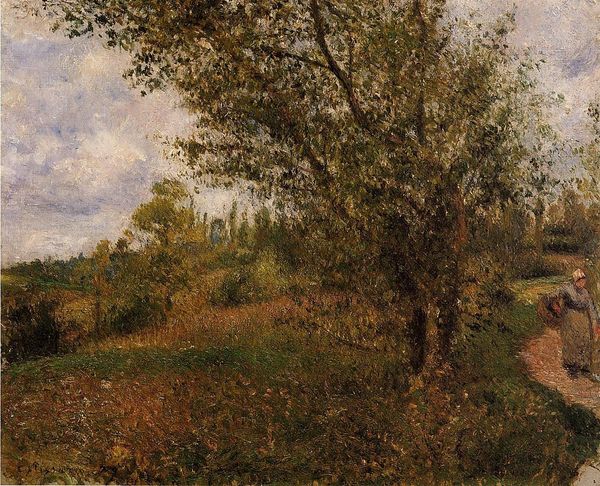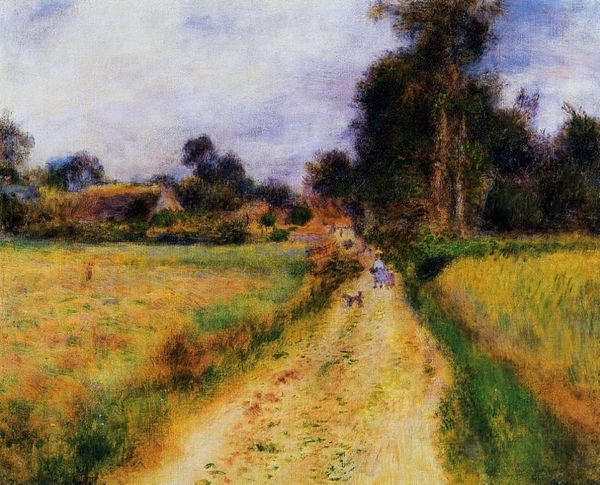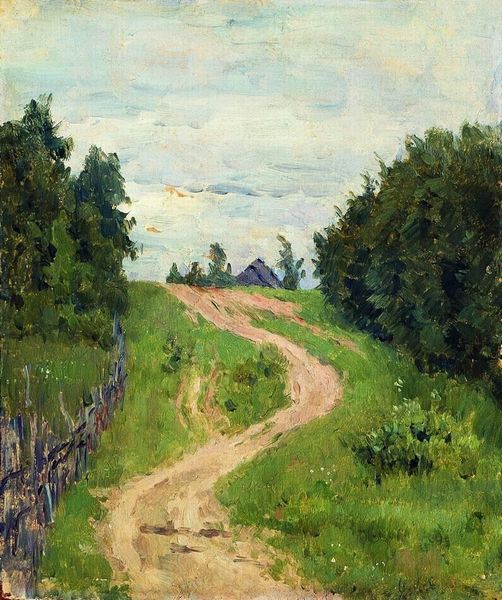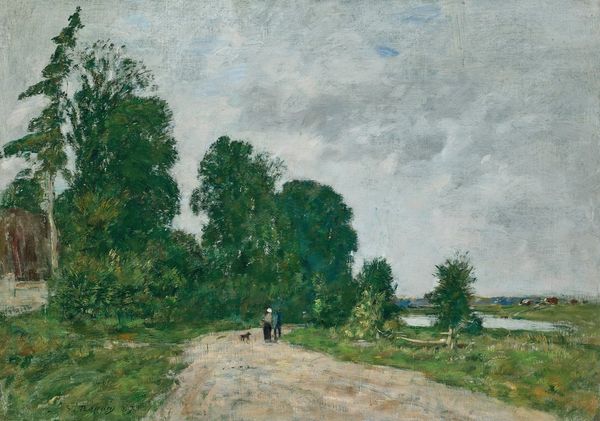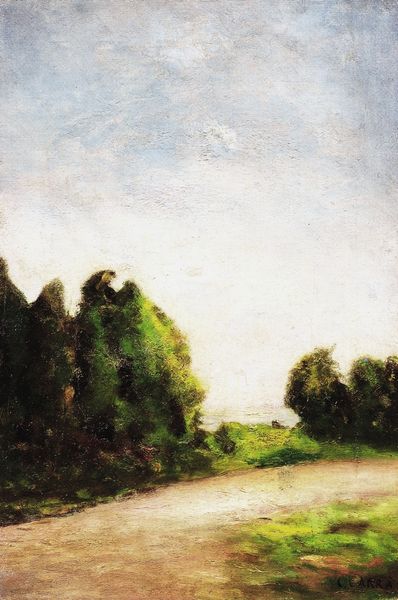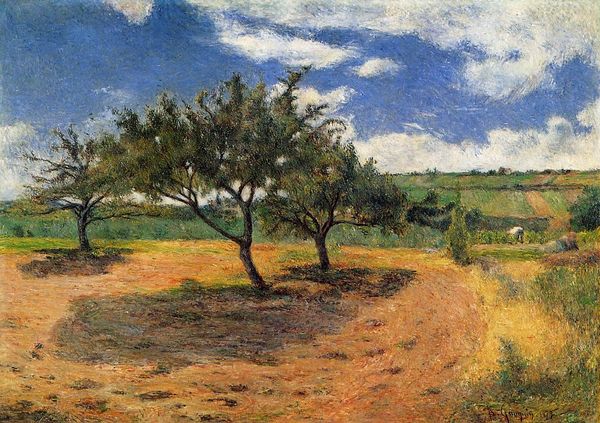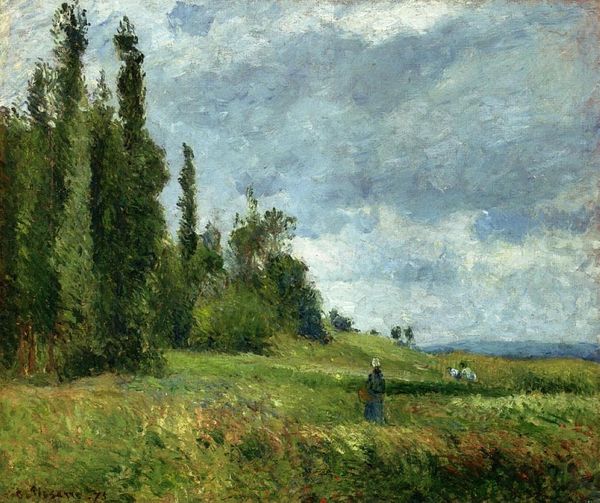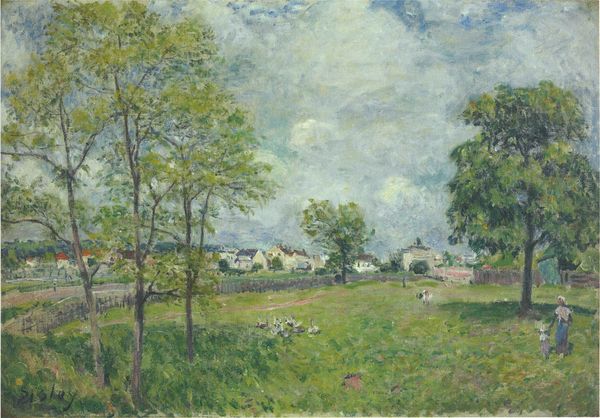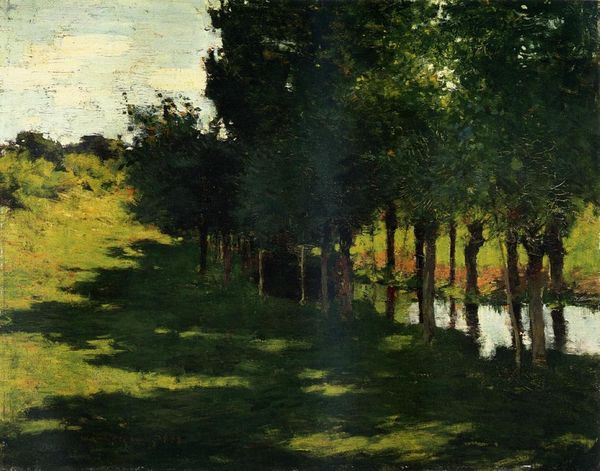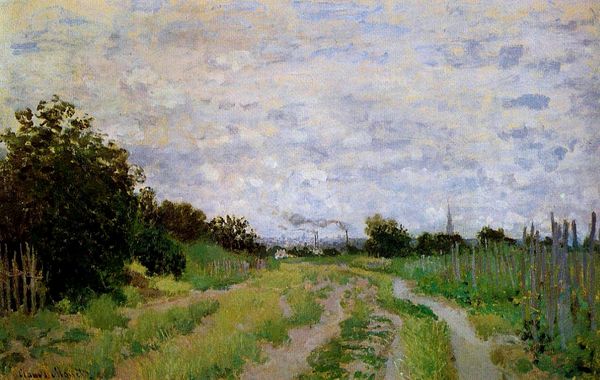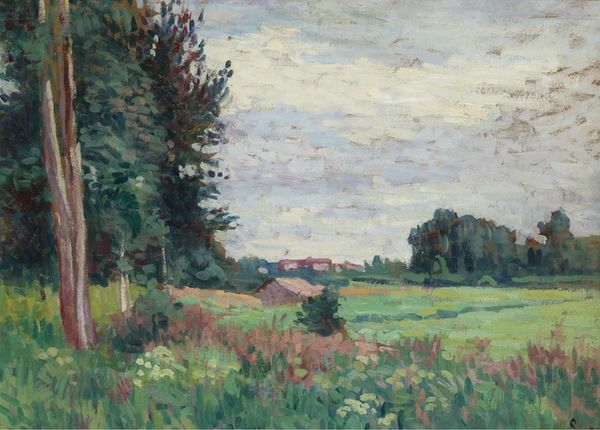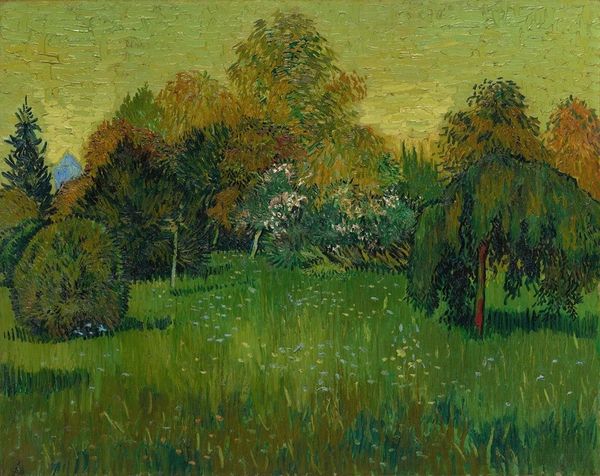
painting, plein-air, oil-paint
#
painting
#
impressionism
#
plein-air
#
oil-paint
#
landscape
#
oil painting
Copyright: Public domain
Editor: Here we have Camille Pissarro’s "The Backwoods of St. Antony, Pontoise," an oil painting from 1876. There’s a real stillness to it; the muted colors and the overcast sky evoke a sense of quiet solitude. What do you see in this piece? Curator: Beyond the immediate impression of serenity, I see a record of changing attitudes toward nature. Consider the title: "backwoods." The landscape wasn’t just scenery; it held psychological significance. The backwoods, then, become symbolic places, hinting at something perhaps lost or overlooked. Notice how the path isn't straight but curves, almost as if suggesting a deeper journey, not just a physical one. Editor: So, it's not just a literal depiction of a landscape. But how does this resonate with cultural memory? Curator: Remember the shift occurring during Pissarro’s time—a move from industrialization toward a yearning for the pastoral. These kinds of landscapes tap into our collective nostalgia. Trees, for example, appear across cultures as symbols of life, growth, and connection to the earth. What do these particular groupings of trees and winding pathways convey to you? Do you think this imagery persists even today? Editor: I hadn't thought of it like that before, but yes! We still use landscape imagery to symbolize peacefulness. Looking at it now, the winding path also feels like it could symbolize choices or the journey of life. I wonder if Pissarro was thinking about any of this? Curator: It’s fascinating how he might have been subconsciously tapping into these primal images. His landscapes thus transcend simple representation. It gives insight to our long standing interest in nature as a psychological symbol. Editor: It's so much more layered than I initially thought. The painting reflects a bigger story about how we see ourselves and our relationship to the world.
Comments
No comments
Be the first to comment and join the conversation on the ultimate creative platform.
